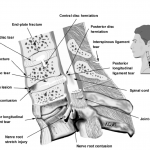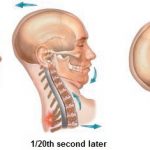PI Monthly Article March 2017
Eyes on the road: Searching for answers to the problem of distracted driving.
Driver Cell Phone Statistics
Using a cellphone while driving is risky and can lead to crashes.
General Cell Phone Statistics
Note: These are the most recent statistics available
• The National Safety Council reports that cell phone use while driving leads to 1.6 million crashes each year.
• Nearly 330,000 injuries occur each year from accidents caused by texting while driving.
• 1 out of every 4 car accidents in the United States is caused by texting and driving.
• Texting while driving is 6x more likely to cause an accident than driving drunk.
• Answering a text takes away your attention for about five seconds. Traveling at 55 mph, that’s enough time to travel the length of a football field.
• Texting while driving causes a 400% increase in time spent with eyes off the road.
• Of all cell phone related tasks, texting is by far the most dangerous activity.
• 94% of drivers support a ban on texting while driving.
• 74% of drivers support a ban on hand-held cell phone use.
Making or taking calls, texting, or interacting with an electronic device in any way can take your eyes off the road at a critical moment. Teenage drivers may be especially susceptible to distractions. In response, states have enacted cellphone and texting bans, and insurers along with other groups have sponsored public education campaigns. Even though studies show that phone use by drivers has declined in states with bans, crashes reported to insurers haven’t gone down during the same period. While phoning and texting have become synonymous with distracted driving in the news, distraction is a much larger problem than just electronic devices. A new study by IIHS in partnership with Virginia Tech helps clarify the risk of cellphone use behind the wheel and offers insight into other distracting things drivers do when they aren’t using cellphones. The research points to the need for a broader strategy to deal with the ways that drivers can be distracted.
Teen Driver Cell Phone Statistics, 11 teens die every day as a result of texting while driving. According to a AAA poll, 94% of teen drivers acknowledge the dangers of texting and driving, but 35% admitted to doing it anyway. 21% of teen drivers involved in fatal accidents were distracted by their cell phones.
Teen Driver Cell Phone Statistics
• 11 teens die every day as a result of texting while driving.
• According to a AAA poll, 94% of teen drivers acknowledge the dangers of texting and driving, but 35% admitted to doing it anyway.
• 21% of teen drivers involved in fatal accidents were distracted by their cell phones.
• Teen drivers are 4x more likely than adults to get into car crashes or near-crashes when talking or texting on a cell phone.
• A teen driver with only one additional passenger doubles the risk of getting into a fatal car accident. With two or more passengers, they are 5x as likely.
U.S. Cell Phone and Driving Statistics
• In 2013, 3,154 people were killed in distraction-related crashes.
• About 424,000 people were injured in crashes involving a distracted driver.
• In 2013, 10% of all drivers ages 15 to 19 involved in fatal accidents were reported to be distracted at the time of the crash.
U.S. Cell Phone and Driving Statistics
• In 2012, 3,328 people were killed in distraction-related crashes.
• About 421,000 people were injured in crashes involving a distracted driver.
• In 2012, 11% of drivers under age 20 involved in fatal accidents were reported to be distracted at the time of the crash.
• One-fourth of teenagers respond to at least one text message every time they drive and 20% of teens and 10% of parents report having multi-text message conversations while driving.
National Survey on Distracted Driving Attitudes and Behaviors
• Nearly half (48%) of drivers admit to answering their cell phones while driving.
• Of those who answered their phones while driving, 58% of drivers continued to drive while talking on the phone.
• In the survey, 24% of drivers reported that they are willing to make a phone call while driving.
• One in 10 drivers surveyed said that, at least sometimes, they send text messages or emails while driving.
• Of the drivers surveyed, 14% said they read text messages or emails while driving.
• A majority of respondents supported laws that banned talking on cell phones, texting, or emailing while driving.
Texting Pedestrian Study
Researchers from the University of Washington monitored 20 of Seattle’s busiest intersections and observed the following:
• Pedestrians who text are 4x less likely to look before crossing the street, cross in crosswalks, or obey traffic signals.
• They also found that texting pedestrians take an average of two seconds longer to cross the street.
“Keep your eyes on the road” is a basic tenet of driving, and it goes without saying that anything that diverts a driver’s attention could lead to a crash. As cellphones have surged in popularity, concerns have been raised about the safety implications of using them behind the wheel, and early studies linked talking on a cellphone directly to increased crash risk. Surprisingly, though, this apparent safety risk hasn’t translated into higher crash rates. In fact, crashes reported to police and insurers have declined as cellphones and other electronic devices have proliferated.
New research by the Institute and the Virginia Tech Transportation Institute (VTTI) examined how drivers’ near-crash and crash risk changes as their cellphone usage patterns change and how cellphone use fits in with other driver behavior and affects attention to the road. The research confirms that frequent cellphone users have more near misses or crashes. However, a new finding is that individual drivers’ overall near-crash or crash rates don’t increase the more they use their phones. That may be because drivers tend to do other things that take their eyes or minds off the road when they aren’t engaged in phone conversations. There’s also evidence that drivers compensate for the distraction of using cellphones, for example, by making calls while stopped or during less-demanding driving situations.
Though wireless phone use continues to climb among the general population, hand-held phone use by drivers appears to be leveling off. After doubling to 6 percent between 2000 and 2005, the percentage of drivers observed talking on hand-held phones while stopped at intersections has stood at 5-6 percent since then, the National Highway Traffic Safety Administration (NHTSA) estimates. Texting still appears to be on the rise. The percentage of drivers texting or visibly manipulating hand-held devices was 1.5 percent in 2012, up a fraction from 1.3 percent in 2011 but sharply higher than the 0.2 percent observed in 2005. Texting in 2012 was highest among 16-24 year-olds, at 3 percent.
At the same time, U.S. crash deaths have fallen sharply since 2006, and overall crashes reported to police and insurers have dropped, too.
This doesn’t mean phone use behind the wheel is harmless. Numerous experimental studies have shown that talking on a cellphone reduces a driver’s reaction time, potentially increasing crash risk. Cellphone use also affects how drivers scan and process information from the roadway. The cognitive distractions associated with cellphone use can lead to so-called inattention blindness in which drivers fail to comprehend or process information from objects in the road even if they are looking at them. Studies also have found negative effects of texting on driving performance.
“Using phones while driving raises a driver’s risk of having a crash because it takes attention away from the road,” says Chuck Farmer, the Institute’s director of statistical services and the lead author of the new research. “Although there have been tragic cases of fatal crashes caused by drivers using electronic devices, an effect on overall crash rates isn’t apparent. The research is still unfolding, but there is a basic conundrum: Why is a distracting behavior not increasing crash rates?”
In a pair of studies, Institute and VTTI researchers set out to try to answer the question. The idea was to measure how drivers’ frequency of cellphone use affects their crash risk over time and examine what other kinds of potentially distracting behaviors drivers engage in when they aren’t using phones.
Naturalistic driving study

One way to study the real-world effects of phone use on driving is by tracking drivers over a period of time. That’s the approach used by VTTI in the 100-Car Naturalistic Driving Study conducted in 2003-04 for NHTSA. The study continuously monitored and videotaped the day-to-day driving and cellphone habits of 105 Virginia drivers for a year. The drivers were involved in a total of 57 crashes and 640 near crashes during the study period. Researchers coded a near-crash event when drivers braked hard or made a sudden evasive maneuver to avoid a conflict.

Using this data set, IIHS collaborated with VTTI to research how phone use affects individual drivers’ near crashes and crashes. While NHTSA and VTTI have published studies using these same data, the new analysis is the first to measure the amount of time that drivers engage in distracting behavior, rather than only looking to see if they were distracted in the moments before and during a near miss or crash. The design allowed researchers to test whether changes in the amount of an individual driver’s cellphone use over time were associated with changes in the driver’s overall near-crash or crash rates. In other words, was there a dose-response relationship between the amounts of cellphone use and near-crash or crash risk?
The studies focused on the effects of talking on or manipulating hand-held cellphones. They didn’t look specifically at composing, sending or reading text messages since the data were collected a decade ago when texting wasn’t as prevalent as it is now. Plus, with video data it is hard to distinguish texting from dialing or searching for phone contacts. Browsing the Internet, checking email and other applications weren’t specifically studied because they were rare when the data were collected. Still, the findings may relate to texting or other applications since making or taking calls on hand-held cellphones or searching for contact numbers are all visual-manual tasks that require drivers to take their eyes off the road.
In the new IIHS-VTTI research, a driver’s near-crash/crash rate nearly tripled when reaching for, answering or dialing a cellphone. The estimated risk of a near crash or crash was about 17 percent higher when other types of cellphone interactions (e.g. talking) were included, but this result wasn’t statistically significant.
Interacting with a cellphone accounted for a small amount of driving time overall — 12 percent. Of this, drivers spent 7 percent of the time talking or listening, 4 percent holding or viewing a cellphone and 1 percent reaching for or dialing. About a third of trips had some cellphone interaction. Drivers were about 13 percent more likely to interact with their cellphones when their vehicles were stopped than when moving.
Looking at the data by age and gender, drivers younger than 21 had higher cellphone use rates than drivers 21 and older, and female drivers had higher use rates than males, but the differences were only marginally statistically significant.
Drivers who frequently handled cellphones, beyond just talking on them, had higher near-crash or crash rates than drivers who didn’t handle cellphones as often, the study found. This could have been because frequent cellphone users were riskier drivers in general, even when not on the phone. For example, young people are the most frequent cellphone users and also are the riskiest drivers.
On the critical question of a dose-response relationship for individual drivers, there was no clear relationship between cellphone interaction rates and event rates. Although the percentage of time drivers spent interacting with a cellphone varied substantially over the study year, researchers were unable to link periods of increased or decreased phone use with a corresponding rise or fall in near crashes or crashes. On average, for each 1 percentage point increase in a driver’s cellphone interaction rate, the event rate increased by 0.1 percent. Statistically this was the same as no change.
On a more granular level, the specific activities that make up cellphone interaction — talking on a cellphone, holding or viewing one and reaching or dialing — were associated with different risks. For each 1 percentage point increase in a driver’s cellphone talking rate, the event rate fell by 0.3 percent. For each 1 percentage point increase in a driver’s cellphone holding/viewing rate, the event rate rose by 0.3 percent. For each 1 percentage point increase in a driver’s cellphone reaching/dialing rate, the event rate rose by 0.4 percent. Although not statistically significant, these estimates suggest an increase in event rates associated with those portions of cellphone use that are more likely to take a driver’s eyes off the road. However, when all portions were viewed together, the risk evens out because of the much greater time associated with talking.
Narrowing the focus to near crashes or crashes in which the drivers in the study were deemed at fault had the same result.
“The failure to find a dose-response relationship between cellphone use and near crashes or crashes may be tied to the kinds of things drivers do when they aren’t on the phone,” Farmer says.
Other distracting behaviors
When not using a phone, drivers tended to engage more in other distracting behaviors such as interacting with passengers, eating, drinking or smoking, the second study found. When drivers were talking on the phone, they were more likely to look at the road ahead and their mirrors than when they weren’t on the phone.
More than a third of the trips involved some other secondary activity, sometimes in conjunction with cellphone use. Other than using cellphones, the most common secondary activities were interacting with a passenger (12 percent of driving time), holding but not otherwise interacting with an object (6 percent), talking/singing/dancing (5 percent) and smoking (4 percent). Adjusting the vehicle’s radio or temperature controls accounted for 3 percent of driving time.
On average, as drivers spent more time talking on the phone, they spent significantly less time doing other distracting things, and the amount of time their eyes were off the driving task fell by just a tiny percentage. The fact that they looked at the road ahead when they were talking on the phone offset the times when they looked away to make or take calls. Conversely, drivers spent more time looking away from the driving task when they were doing things other than talking on a phone.
OTHER SECONDARY BEHAVIORS DECLINE WHEN PEOPLE TALK ON CELLPHONES
A VTTI study sponsored by NHTSA and published in 2010 using data from the 100-Car Naturalistic Driving Study examined the likelihood of behaviors secondary to driving relative to near crashes or crashes. The risk of a near crash or crash was estimated to be 1.3 times as high when engaging in a moderately demanding behavior such as inserting a CD, eating, or talking on a cellphone.
“The latest research from IIHS and VTTI bolsters earlier VTTI findings on other sources of distraction beyond cellphones,” says Charlie Klauer, a VTTI research scientist who is a co-author of the IIHS-sponsored studies. “What we are consistently finding is that the tasks requiring the driver to look away as well as manually manipulate an object/cellphone are also those tasks that increase near-crash/crash risk.”
Drivers in the IIHS-VTTI studies appeared to compensate for the distraction of using a cellphone by, for example, reducing their travel speeds at the start of a call. Speeds within six seconds of initiating or receiving a call on average were 5-6 mph slower than at other times.
“To effectively tackle the problem of distracted driving, we need a broader approach that takes into account the many and varied sources of driver distraction,” says Adrian Lund, president of IIHS and HLDI. “Singling out cellphones may lead drivers to disregard the fact that other behaviors that divert their attention from the road are risky, too. Fortunately, there is both new and old technology to help us address the problem.”
Crash avoidance technology, such as front crash prevention systems, should help offset some of the effects of distracted driving as these systems make their way into more vehicles on the road. In the meantime, existing traffic engineering countermeasures such as red light cameras and roundabouts also appear to get drivers to slow down and pay more attention to surrounding traffic (see Status Report special issue: red light running, Feb. 1, 2011, and “When roadway design options are wide open, why not build a roundabout?” Nov. 19, 2005). Primary safety belt laws, graduated driver licensing for beginning teen drivers and alcohol interlocks for first-time offenders are additional strategies proven to save lives and reduce crashes.






